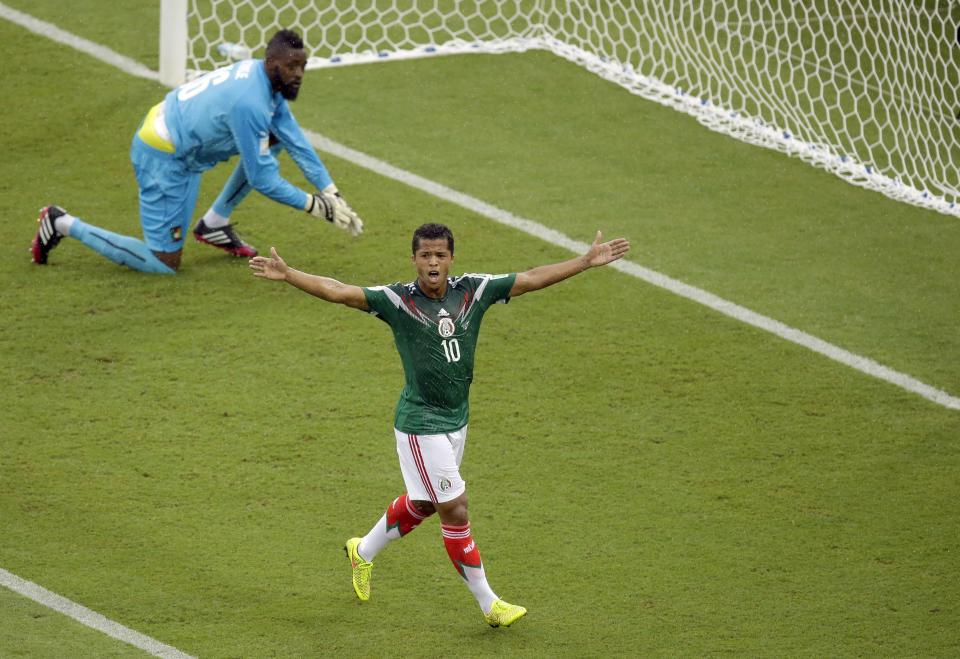What is offside in soccer? Explaining the rule so you're prepared to watch the 2022 World Cup.
The offside call is often as consequential a call as a foul inside the penalty box in a soccer match. It’s often the reason a goal gets overturned. Or two goals.
That was the case at the 2014 World Cup in Brazil for Mexico forward Giovani dos Santos, who saw two goals overturned in the Mexican side’s opening match against Cameroon. Mexico ultimately beat the Cameroonians 1-0 on a late goal, but a 3-0 result would have boosted their goal differential and perhaps changed the tournament dynamics. Mexico narrowly finished second in its group on goal differential behind Brazil. The disallowed goals would've put them in a better spot to finish first heading into the final group stage game, potentially setting up a more favorable opponent in the round of 16 knockout stage.
Video replay showed dos Santos onside on both goal-scoring plays. FIFA pulled the sideline judge from working with that officiating crew at a subsequent match, The New York Times reported.
The offside rule has been a source of innumerable controversial calls in soccer, in large part because they were left completely to the whims of human error.
FIFA only began allowing World Cup officials the ability to review video replays to confirm calls in 2018. This year it’s rolling out a new semi-automated, offside technology to enhance its Video Assistant Referee (VAR) system at the 2022 Qatar World Cup.
USA eliminated: Netherlands knocks off USMNT in World Cup round of 16 with dominating 3-1 win

What is offside in soccer?
A player is in an offside position if he (any part of the head, feet or body) is closer to the opponent’s goal line than the second to last defender and the ball – and he is in the opponent’s half of the field, according to Law 11 of FIFA’s Laws of the Game.
Human rights: Migrant workers were deceived and died for Qatar's World Cup. Thousands want compensation
An offside offense is committed when a player receives a pass from a teammate after having been in an offside position the moment his teammate touched the ball. The same rule applies if the ball makes its way to a player in an offside position from an unintentional deflection off of a defender.
What are soccer's yellow card rules? How players get red cards, suspensions in World Cup
The referee awards an indirect freekick to the defending team when upon ruling offside.
It is not considered an offside offense if a player in an offside position intercepts an opponent’s deliberate pass.
What happens if a World Cup game ends in a tie? FIFA extra time and penalty shootouts, explained
Why is there offside in soccer?
The rule was introduced in 1883 by the Football Association, the English governing body of the sport, to keep players from lurking by the opponent’s goal, according to the International Olympics Committee website.
Where is the next FIFA World Cup? The 2026 tournament is coming to a city near you.
“Without the offside rule, long balls could be kicked directly towards team-mates placed in the opposition goal area and would prove to be too effective,” the site reads, “thereby reducing the element of skill and strategy in football games.”
Is it offside or "offsides"?
It's "offside," much like "daylight savings" is actually "daylight saving."
How does the World Cup work? The ultimate soccer showcase, explained
This article originally appeared on USA TODAY: What is offside in soccer? What to know about rule for 2022 World Cup.

 Yahoo Movies
Yahoo Movies 